What should you pay attention to?
Since February 1, 2015, a list of all mammals that may be kept has been drawn up. Most animals such as dogs, cats and rabbits can be kept by anyone. Some mammals are only allowed to be kept if you can comply with the guidelines. These guidelines concern information about the specific conditions for this animal. For example the type of food and the minimum size of the enclosure. These are mostly animals that you can find in the zoo.
Rabbits can therefore be kept as usual, but who doesn't want the best for their rabbit? Therefore, below we discuss what you should pay attention to if you want to take good care of your rabbit. The general rule is that the animals have sufficient freedom of movement, are protected from the weather, can show their natural behavior (as far as possible), sick and injured animals are helped immediately and that the animals receive sufficient healthy and suitable food and water. But what does this mean for your rabbit?
The cage
The requirements for good housing include:
-
There must be no sharp edges, projections or other points that could injure the animal.
-
The room must be easy to clean and disinfect.
-
Space and materials are adapted to the natural needs of the animal. Consider, for example, the animal's day and night rhythm.
-
A pregnant animal or an animal with little ones has sufficient and suitable nesting space available.
-
Only animals that can live together in a group may be housed in an enclosure.
So far this all sounds very logical. We will now go into more detail about the needs of your rabbit.
A cage for a rabbit should be divided into two functional areas; a part for lying and sleeping and a part for activities. A wire cage is best, as it is well ventilated and easy to clean. A rabbit that roams freely around the house only needs a cage in which to lie sprawled on its side. Otherwise, the length of the cage depends on the size of the animal: the rabbit must be able to make at least 3 hops (equivalent to about 2 meters for a 5 kg rabbit). The cage should also be high enough for the animal to stand upright on its hind legs. The ideal ground cover is something like soil. Rabbits are very susceptible to pododermatitis (inflammation of the soles of the feet). This can be caused by the wrong substrate. Bedding should be soft and changed regularly (when wet). Glass cages are unsuitable because they cannot be adequately ventilated.
A rabbit outside must be protected from the wind and it must not be too cold (not below 4°C). In winter you can house your rabbit in a hutch or protect it from the cold by closing off parts of the hutch. Not too much, of course, because then there is no ventilation. Rabbits are less resistant to heat (> 28 degrees) and must therefore be well protected against it by providing them with cool lying places.
Rabbits are naturally very clean animals and want to have all of their needs in one place. You might consider purchasing a special litter box for rabbits. These are easy to empty and clean.
Food for rabbits
Rabbits are selective eaters. They prefer to eat soft, succulent plants that are slightly sweet. They combine this with roughage (hay) for gastrointestinal movement, chew it very thoroughly, and spend most of the day on it. Rabbits can process large amounts of hay in a short amount of time and typically eat early in the morning and at night.
Rabbits in captivity are usually fed dry food. However, these croquettes contain too little fiber. This can lead to obesity and chronic diarrhea in the animals. A rabbit is largely dependent on hay and therefore must always be present in the hutch. As a rule of thumb, a rabbit should not eat more than 20 g of dry food per kilogram per day.
Malnutrition can lead to fur plucking and compulsive gnawing. Boredom and destructive behavior can be solved by enriching the cage and feed; Give grass and hay, hide vegetables and sweets in the enclosure, cardboard boxes to chew on, or give rodent toys and/or sticks of wood. Again, remember not to give too many treats or kibble.
Together or alone?
Rabbits live in large stable groups of up to several hundred animals in the wild and are active both above and below ground. For this reason, they should preferably be kept with more. Suitable groups are the mixed groups with partly sterilized and castrated animals and partly intact animals.
You can't just put a rabbit together with another rabbit. Rabbits can fight to the death. Mating rabbits must be done carefully. It is best to have this done by people who have experience with it.
Your rabbit is free in the house
Rabbits need daily exercise, not only for fitness and pleasure, but also to stimulate bowel movements. These are very important for rabbits.
It is important to consider a rabbit's normal needs when releasing them indoors. Rabbits will gnaw and claw at everything and feel the need to run and hide when there is danger. So watch out for poisonous plants like aroid (Dieffenbachia seguinae), oleander (Nerium oleander) and electrical wires. It's also good to have upside down boxes for them to sit under.
This text was translated by a translation machine
 Horse Pharmacy
Horse Pharmacy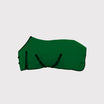 Rugs
Rugs Care
Care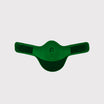 Saddle and Attachments
Saddle and Attachments Leg Protection
Leg Protection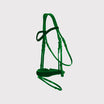 Bridles
Bridles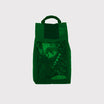 Feed
Feed Fly Masks
Fly Masks Saddle Pads
Saddle Pads Headcollars and Ropes
Headcollars and Ropes Bits
Bits Other Disciplines
Other Disciplines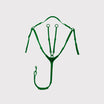 Reins and Auxiliary Reins
Reins and Auxiliary Reins Clipping
Clipping Western
Western Eventing
Eventing Foals
Foals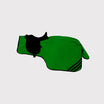 Reflection
Reflection Therapy Products
Therapy Products Boots and Shoes
Boots and Shoes Breeches and Belts
Breeches and Belts Tops
Tops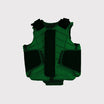 Safety
Safety Competition
Competition Heated Clothing
Heated Clothing Gloves
Gloves Socks
Socks Spurs and Attachments
Spurs and Attachments Technology
Technology Whips
Whips Gifts
Gifts Casual Wear
Casual Wear Underwear
Underwear Rider Pharmacy
Rider Pharmacy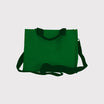 Bags
Bags Books
Books Laundry supplies
Laundry supplies Jewelry
Jewelry Feed and Waterbowls
Feed and Waterbowls Equipment
Equipment Tack Room
Tack Room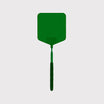 Pest Control
Pest Control Arena
Arena Horse Toys
Horse Toys Wheelbarrows
Wheelbarrows Yard
Yard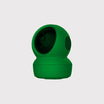 Surveillance
Surveillance Disinfect
Disinfect Washing Area
Washing Area Lighting
Lighting Horse Pasture
Horse Pasture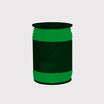 Current Conductors
Current Conductors Pole
Pole Insulators
Insulators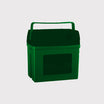 Energisers
Energisers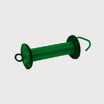 Gate Handles
Gate Handles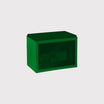 Batteries and Accumulator
Batteries and Accumulator Nets
Nets Grounding
Grounding Tools
Tools Fencing Security
Fencing Security Wolf Defense
Wolf Defense Fencing Sets
Fencing Sets Fence locks
Fence locks Dogs
Dogs Cats
Cats Rodents
Rodents Dogs Pharmacy
Dogs Pharmacy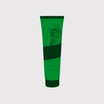 Cats Pharmacy
Cats Pharmacy Rodents Pharmacy
Rodents Pharmacy Cattle Pharmacy
Cattle Pharmacy Poultry Pharmacy
Poultry Pharmacy Veterinary Supplies
Veterinary Supplies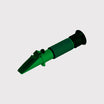 Cattle
Cattle Sheep and Goats
Sheep and Goats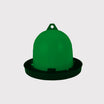 Poultry
Poultry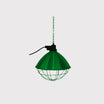 Heat Lamps
Heat Lamps Calves
Calves Marking
Marking Halters
Halters